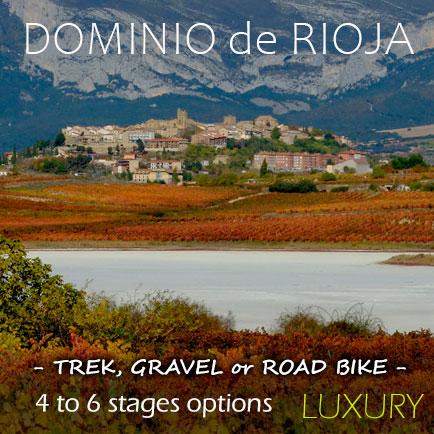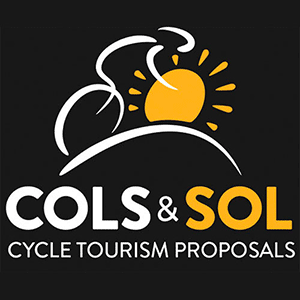

4 Days of Sport Cycling among the Castles of Navarre
style - road -
SELF-GUIDED CYCLING ROUTE
4 Stages / 5 Nights
PAMPLONA - CASTILLOS del REYNO -
Pamplona CASTILLOS del REYNO is a cycle touring route for Road bike. It is located in the South face of the Pyrenees, mainly in the Pre-Pyrenean Basins and in the Middle Zone of the NAVARRA Foral Community.
The track of the route runs linking - and logging in them when possible - several of the CASTLES that defended the old REYNO.
The PIRINEOS PUNTO BIKE proposal to pedal the route is
in broad strokes, a Self Guided Pack which includes the Half Board Accommodations, the Tracks of the route and the Luggage Transport from hotel to hotel.
Being as it is; a VIP proposal, the hotels and the services we have selected in each geographical area through which we travel are those that, under our criteria, meet the highest quality standards, both from the point of view of hotel comfort and from the point of view of attention to the cyclist.
The proposal can also be completed with a Guide service and / or support vehicle.
read more...
- less -
NAVARRA is a place full of cultural and geographical diversity. In just 100 kilometers in a straight line we pass from the PYRENEES - with its mountain culture - in the North, to the plains of the banks of the Ebro in the South.
In between, the Middle Zone with the Pre-Pyrenean Basins in the East and the Pamplona Basin in the center. a territory on the one hand full of history; Populations Vascones, remains of Roman Towns, Medieval Fortresses, Monasteries, CASTLES ... and by another one of a great variety of different natural spaces.
It is in this territory, with a meteorology that allows practically rolling throughout the year, where our proposal Pamplona CASTILLOS del REYNO is developed.
read more...
- less -

For zoom in or

To get the idea of what you can find if you decide to know the ROAD option of Pamplona CASTILLOS del REYNO click and browse below in any of these tabs.
- The Route
- Stage 1
- Stage 2
- Stage 3
- Stage 4
Stage 1:Pamplona - Aoiz - Distance: 91 km Unevenness: 1.500 m
Stage 2:Aoiz - Javier - Distance: 93 km Unevenness: 1.350 m
Stage 3:Javier - Olite - Distance: 103 km Unevenness: 1.400 m
Stage 4:Olite - Pamplona - Distance: 82 km Unevenness: 1.250 m
The complete route
Distance: 370 km Unevenness: 5.500 m
Stage 1: Pamplona - Aoiz - Distance: 91 km Unevenness: 1.500 m
In this first stage we will make an almost mandatory incursion - being in Navarra - to the northern part of the Community, to one of the most emblematic points - but the most - of the old Reyno de Navarra, La Colegiata de Orreaga-Roncesvalles, in the Navarre Pyrenees.
We will arrive to it traveling in parallel and in reverse the Camino de Santiago and its pilgrims. With its reminiscences of tombs of Kings and battles of Vascones we can say that "we are not in a CASTLE, but almost".
In the 2nd half, after continuing for a few kilometers between traditional Pyrenean mountain villages, we will resolutely head south following the course of the Irati River to the Itoiz reservoir. We are already in the Pre-Pyrenees Basins, a territory pulling "wild" and lonely that we will not abandon until the last stage of the route.


The route begins. Professional peloton touring Pamplona before "starting" Pamplona CASTILLOS del REYNO.
Euskal Itzulia 2017

Ascending the Erro Mountaun Pass, first altitude of the day.
Cicloturista La Indurain 2016

Mezkiritz Mountain Pass, one small "tack" before arriving at Espinal.
Cicloturista La Indurain 2016

Cyclists and pilgrims on the Camino de Santiago in Espinal, typical population of the Navarrese Pyrenees.
Cicloturista La Indurain 2016

Church Colegiata de Roncesvalles among the forests that surround it. Above on the right, the Puerto de Ibañeta, maximum height of Pamplona CASTILLOS del REYNO.
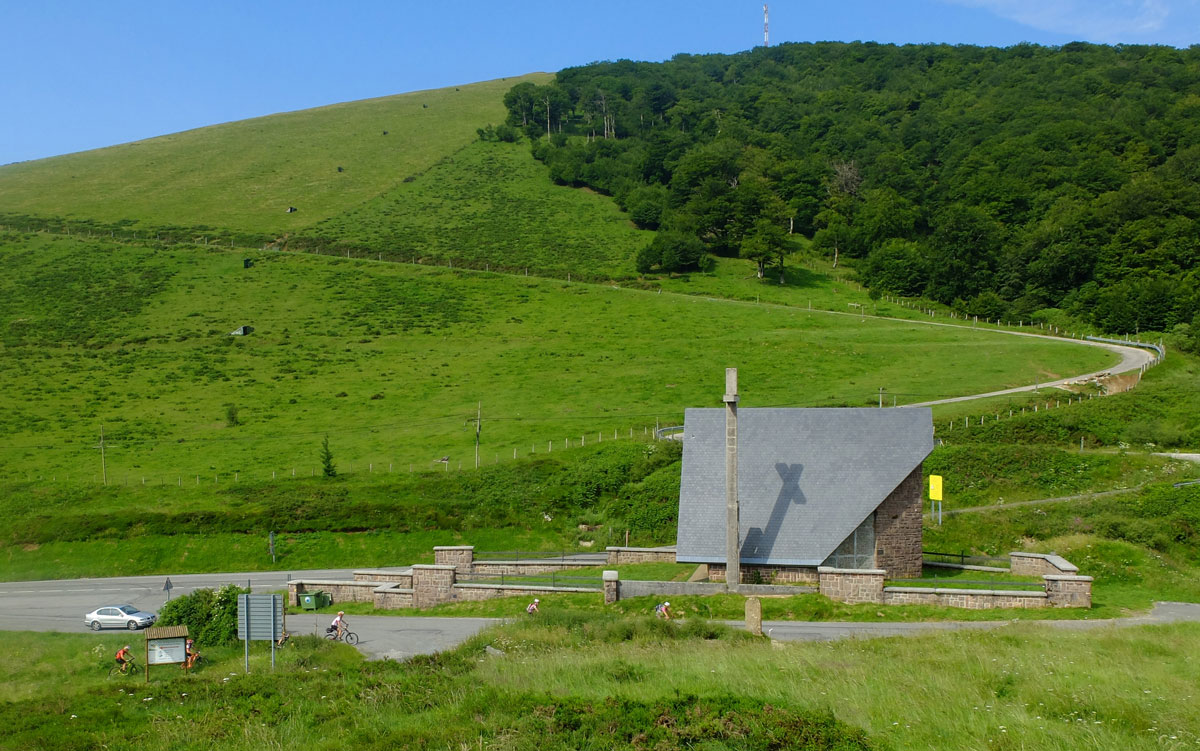
Ibañeta Mountain Pass, 1057 meters of altitude. We are at the highest point and in the northernmost part of the route, we turn 180º and we finally head towards the South.

What remains of the stage is clearly descending, so we can afford to stop at Roncesvalles long enough to visit the tomb of the Navarrese King Sancho VII El Fuerte.

Interior of the Church Collegiate of Orreaga-Roncesvalles.

In the second half of the stage we descend towards the Pre-Pyrenean Basins following the course of the Irati River.
Up
Stage 2: Aoiz - Javier - Distance: 93 km Unevenness: 1.350 m

After a start through a territory humanized by crop lands crossing the region of Urraul Bajo, the stage continues to climb the Valle del Romanzado through mountainous terrain through the towns of Bigüézal and Castillonuevo with an ascent that we can consider a Mountain Pass.
We enter the Aragonese lands - which we will not leave until the end of the stage - descending to the course of the Esca, continuing downstream to the Pantano de Yesa and away from the Pyrenean influence towards the arid lands of the South. In the final part of the stage we will ascend the Cuatrocaminos Mountain Pass. Here turning 90º to the West we will descend by a fast highway to look for the place that - aking advantage of a short section of unpaved road - it allows us to access Navarra again in the Javier Castle, place where the stage ends.


In the Alto de Iso we enter the territory of the Foces Prepirenaicas de Navarra. In the first photograph, viewpoint over the Foz de Arbaiun, in the second, the view from the viewpoint.
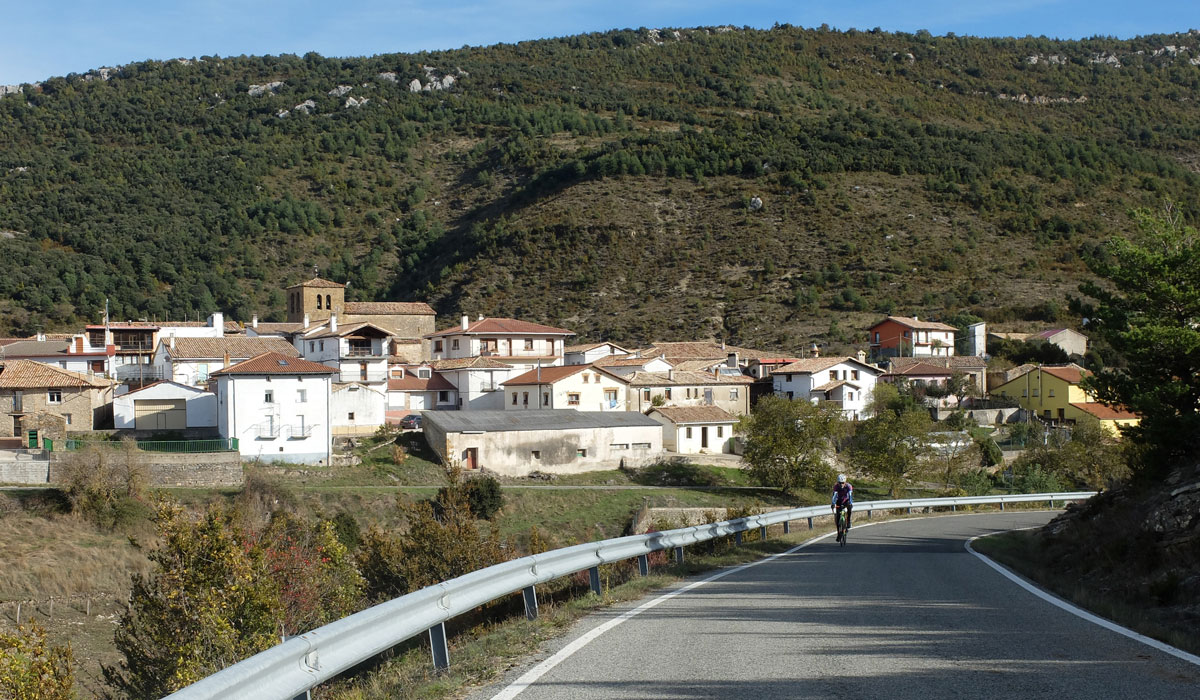
Ascending through Valle del Romanzado, we leave behind Bigüézal.

In Castillonuevo - NewCastle - we are preparing to leave Navarra. The castle was new but only the name remains, it was ordered destroyed during the conquest of Navarre in the sixteenth century. The Pyrenees are so present that you can doubt that this is Pre-Pyrenees.
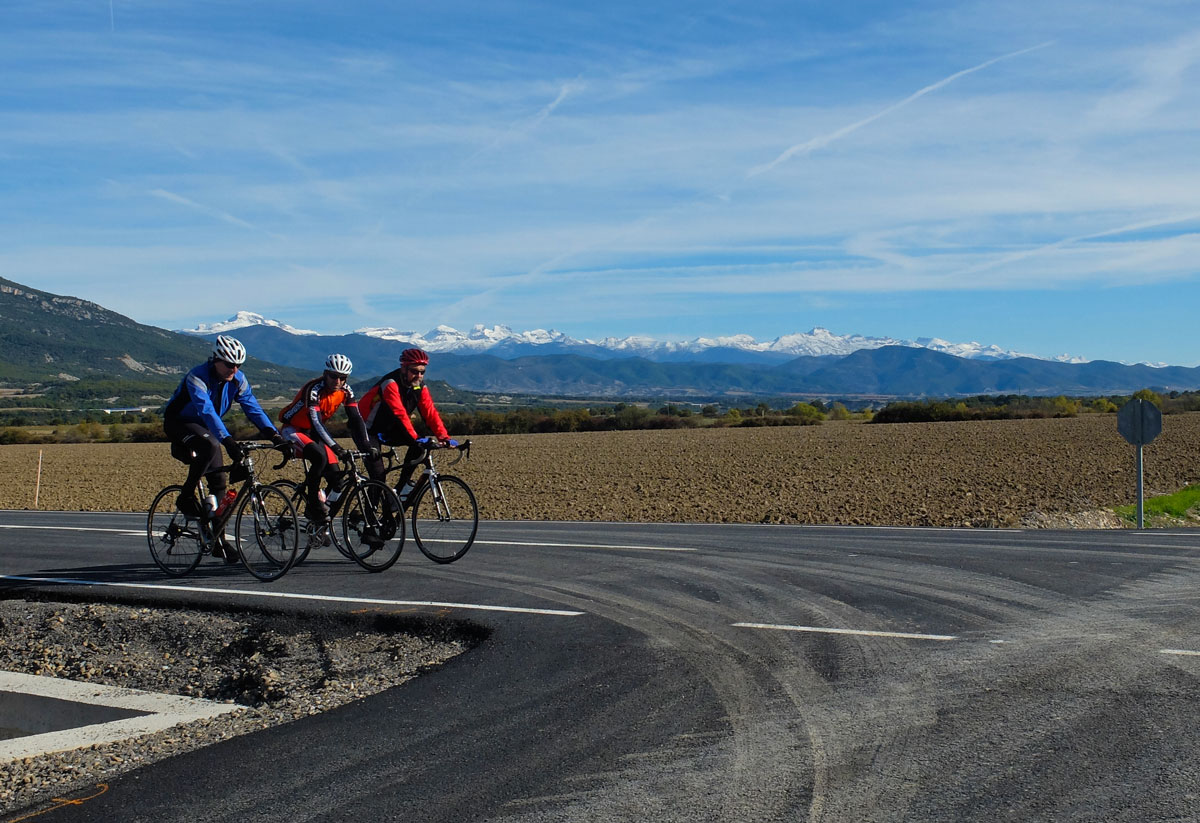
We surround the Yesa reservoir through Aragonese lands. When the snow forces to finalize the season cyclist in the great Mountain Passes, the Prepyrenean Basins with their environment of dry land are the perfect option to continue cycling.
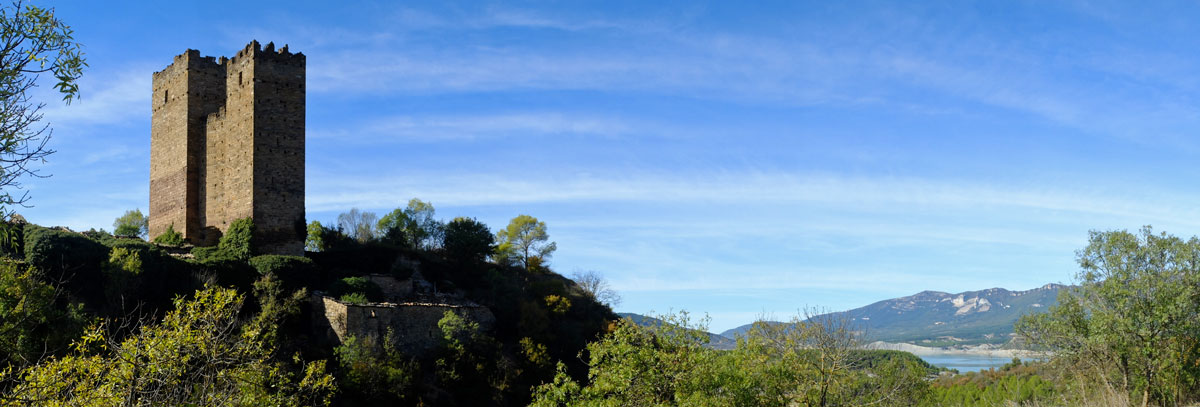
Ruesta Tower on the desolate southern slope of the Yesa reservoir.

Attempts to revive the abandoned towns of the Pre-Pyrenees. Casa Valentin in Ruesta, in the perfect stage kilometer to make a good refreshment.
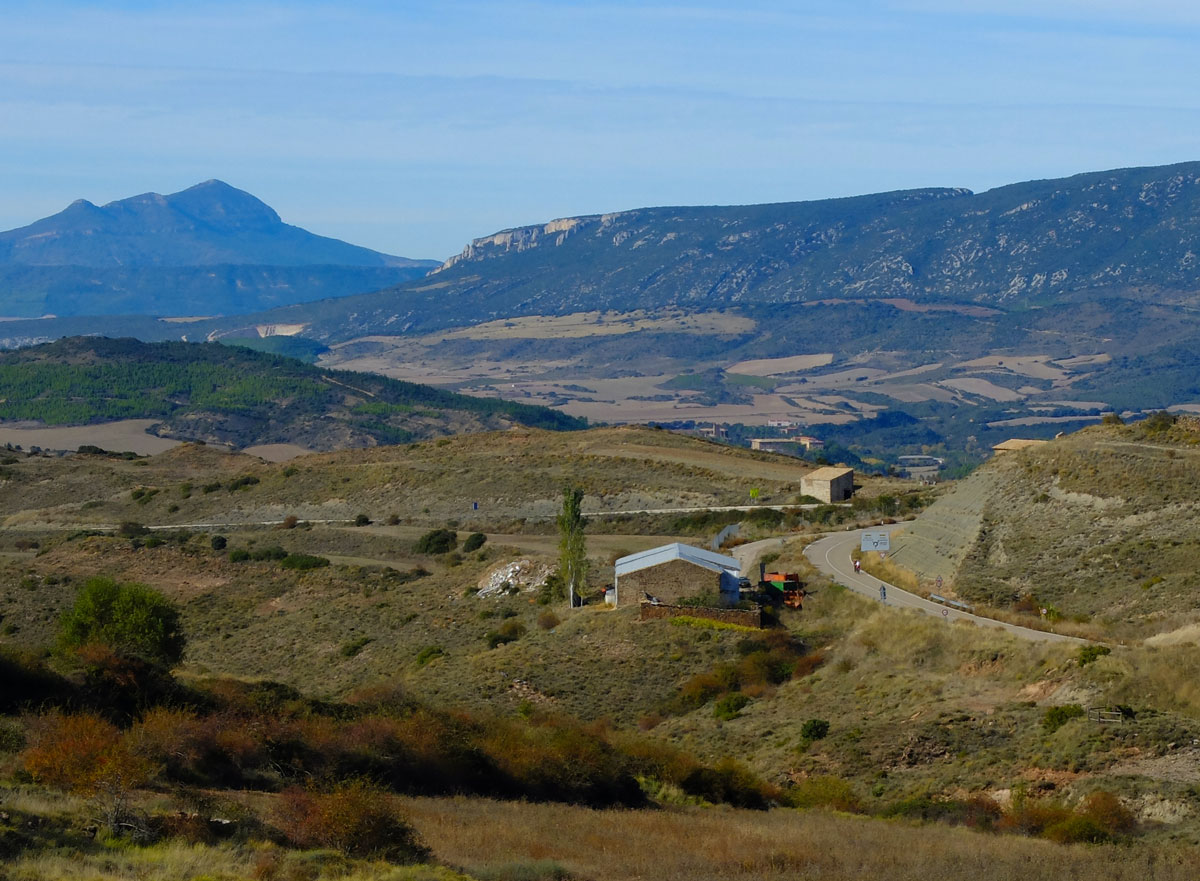
Rapid descent from the Cuatrocaminos Mountain Pass to Undués de Lerda along an impeccable road that curiously refuses to appear on maps.
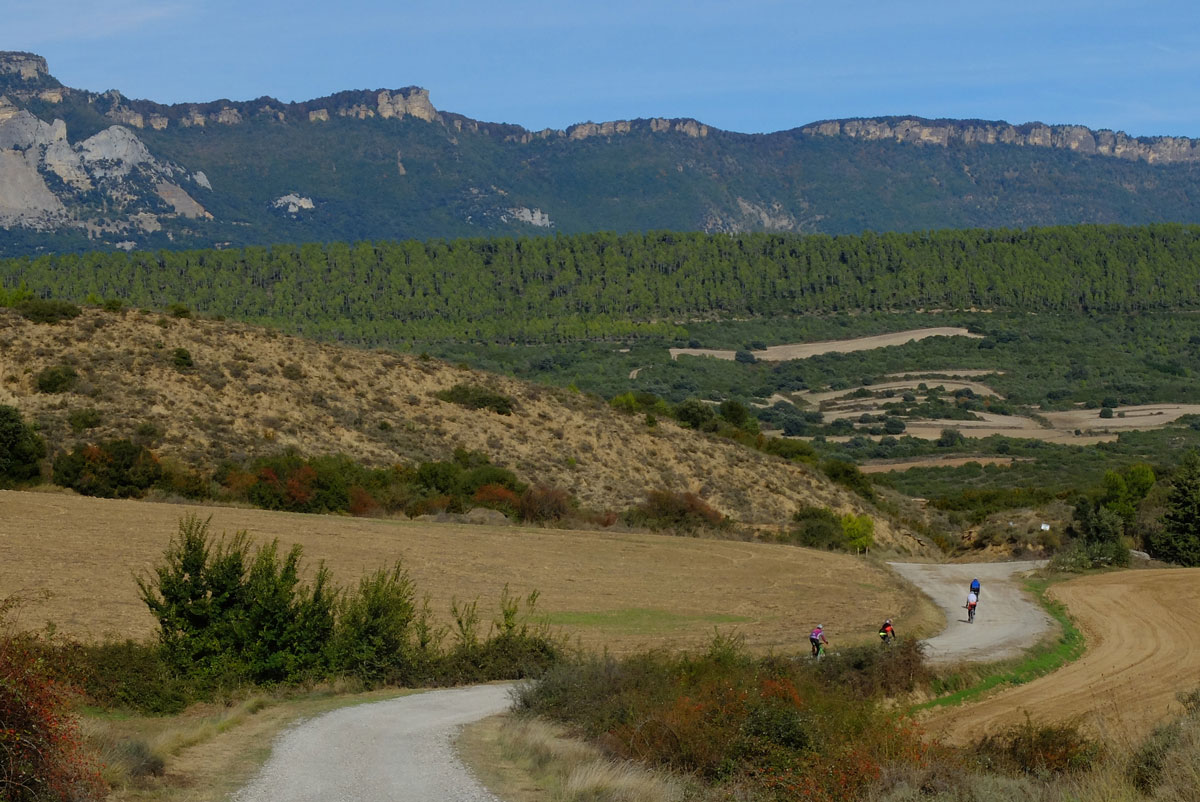
We return to the limits between Aragón and Navarra under the gaze of the Sierra de Leyre and its famous Monolito, for 3 kilometers, we assume that for administrative reasons, the road becomes "Sterrato". We can avoid it, but the difference is so in favor if we use it that by default it is the official track of Pamplona CASTILLOS del REYNO.

The Javier Castle appears almost unexpectedly.

End of the second stage. We are in one of the most emblematic places in Navarra.
Up
Stage 3: Javier - Olite - Distance: 103 km Unevenness: 1.400 m
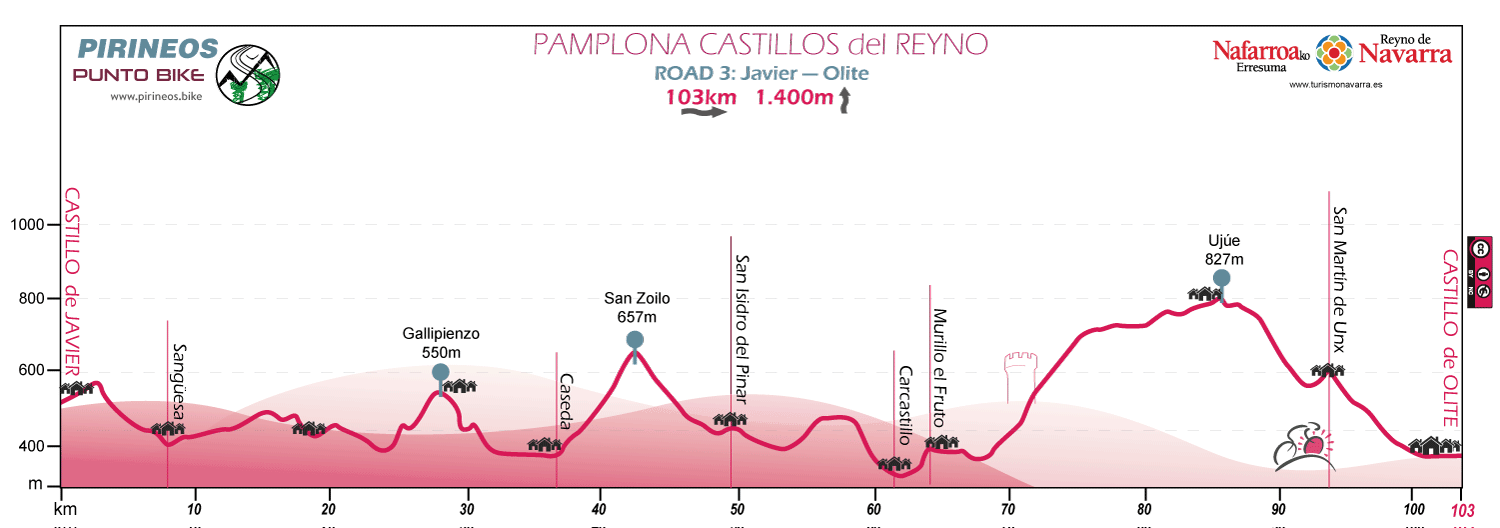
The 1st part of this 3rd stage covers almost all the most important villas of the Sangüesa region. After crossing Sangüesa itself, which appears a few kilometers from the beginning, the "watchtower" villages of Aibar and Gallipienzo will come, the 2 full of interesting spots and clamoring for a slower visit than the one we can usually afford when we are in route on top of the bicycle.
We will leave the Comarca of Sangüesa crossing Caseday heading South on the lonely road of San Isidro del Pinar to the "Puerta de La Bardena" in Carcastillo. After this brief contact with La Ribera Navarra, we return to the solitude by the route that crosses the Sierra de Ujue, returning us to the Middle Zone, ascending La Blanca Mountain Pass and ending in Ujue, another one of the spectacular "watchtower" villages that characterize this 3rd stage
Ujue, San Martin de Unx in the descent and Olite at the end of the route, three authentic jewels of the medieval history of Navarre. We will have to decide how to divide the time we dedicate to each one. The task is a lot.
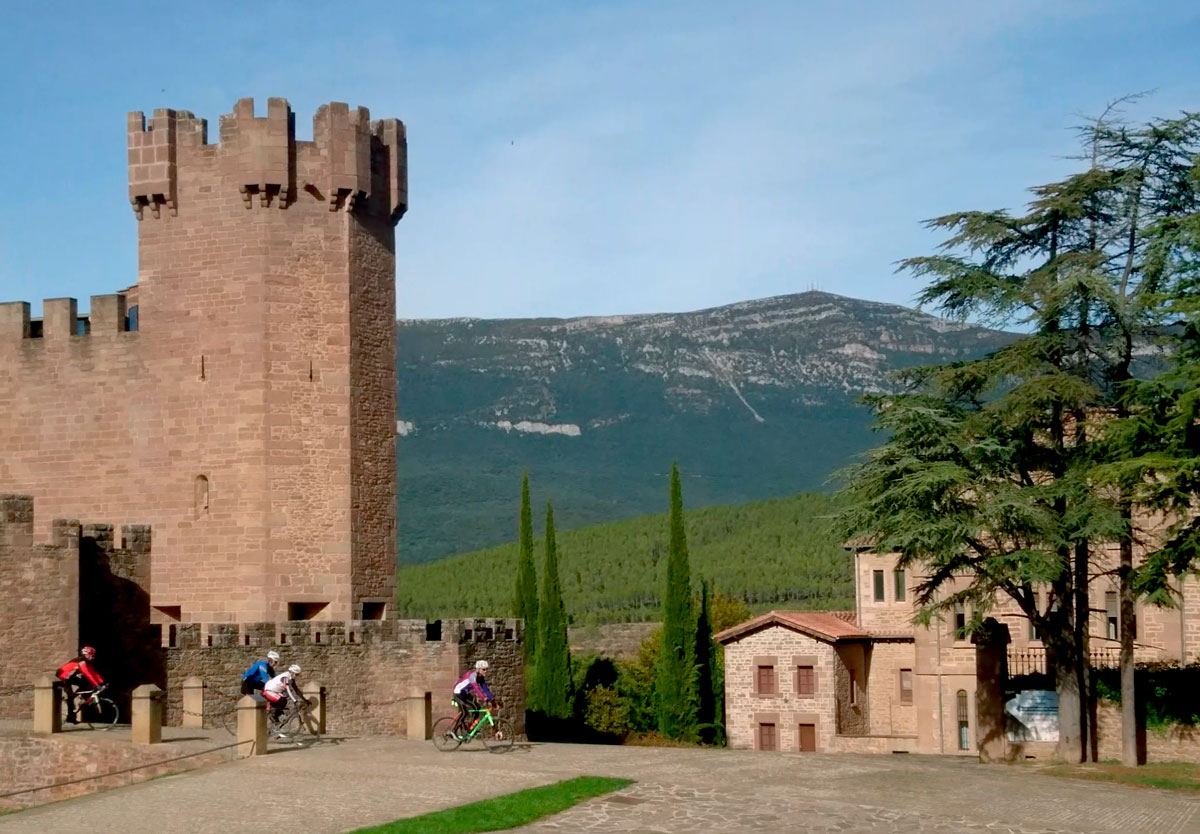
The third stage - between Javier and Olite - joins two of the most emblematic and best preserved castles in Navarre.

Landscapes of the route. The same culture, different times.
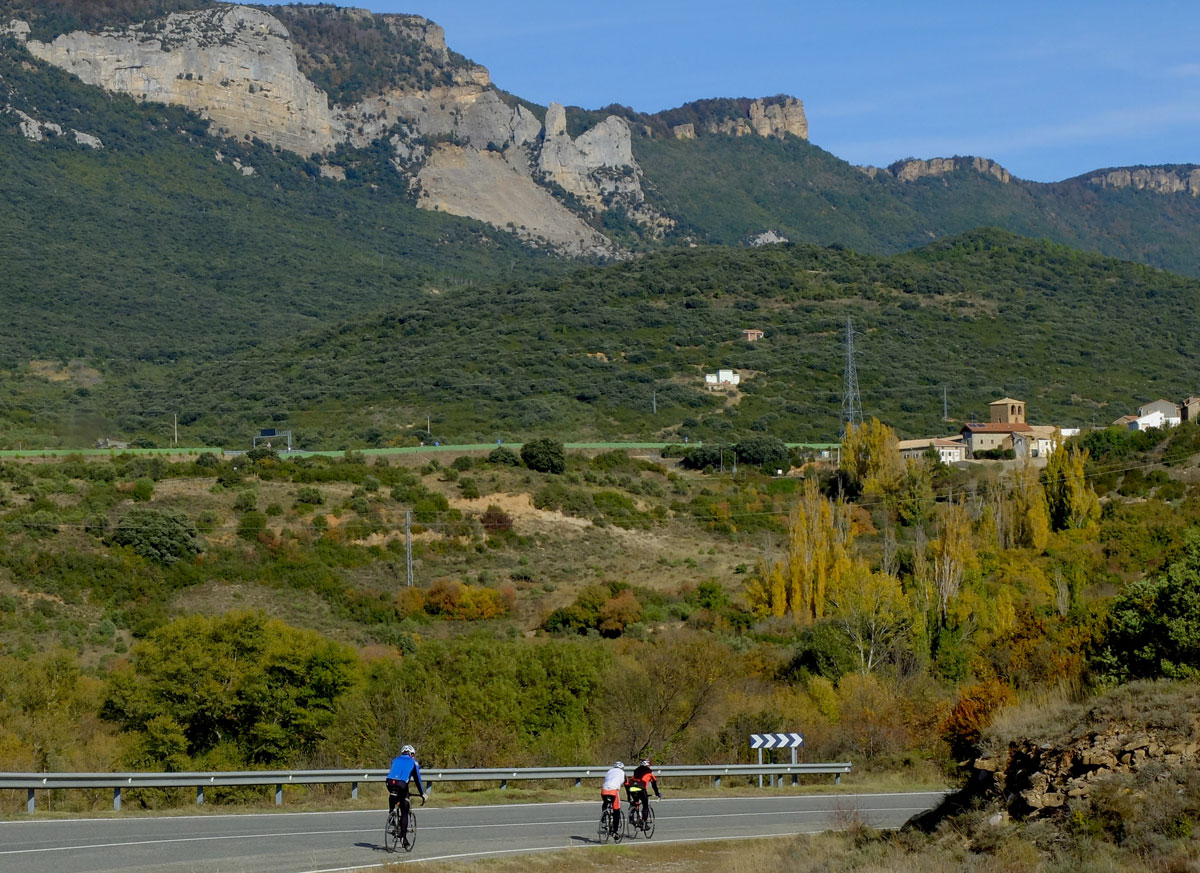
Last kilometers under the Sierra de Leyre. We are heading towards the old Valdaibar.

The vineyards of the sub-denomination "Navarra" dot the route.

Village "watchtower" of Aibar. It is worth it to make an extra effort and climb with the bikes between its streets to the church's viewpoint.

Characteristic landscape in the valley background of the ancient Valdaibar, villages - Sada in the picture - crops and vineyards.
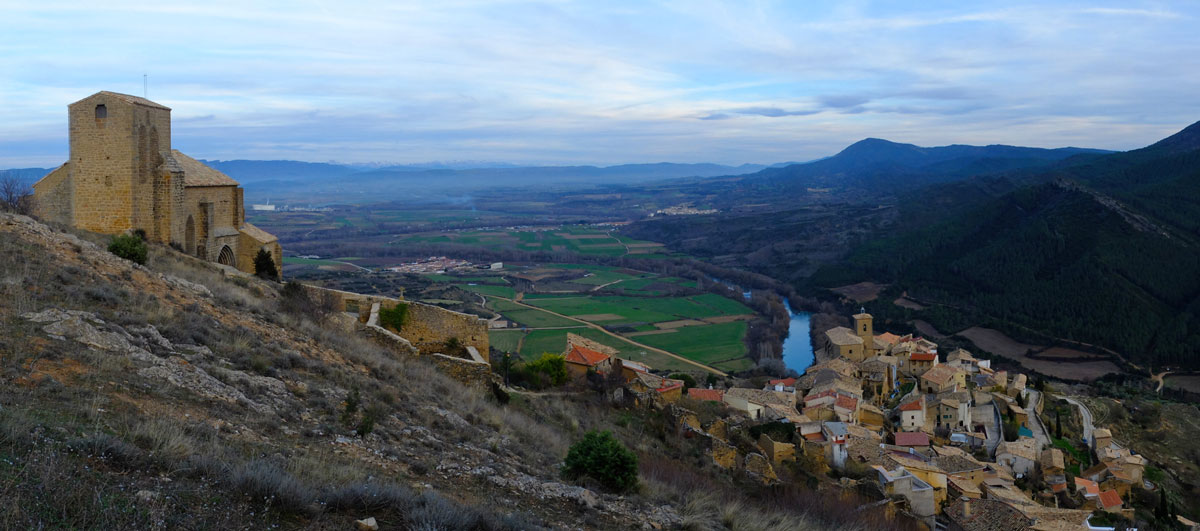
Despite our cycling shoes, it would be worthwhile to try to climb a bit - on foot - through the cobbled streets of Gallipienzo. We are in the second town "watchtower" of the stage.

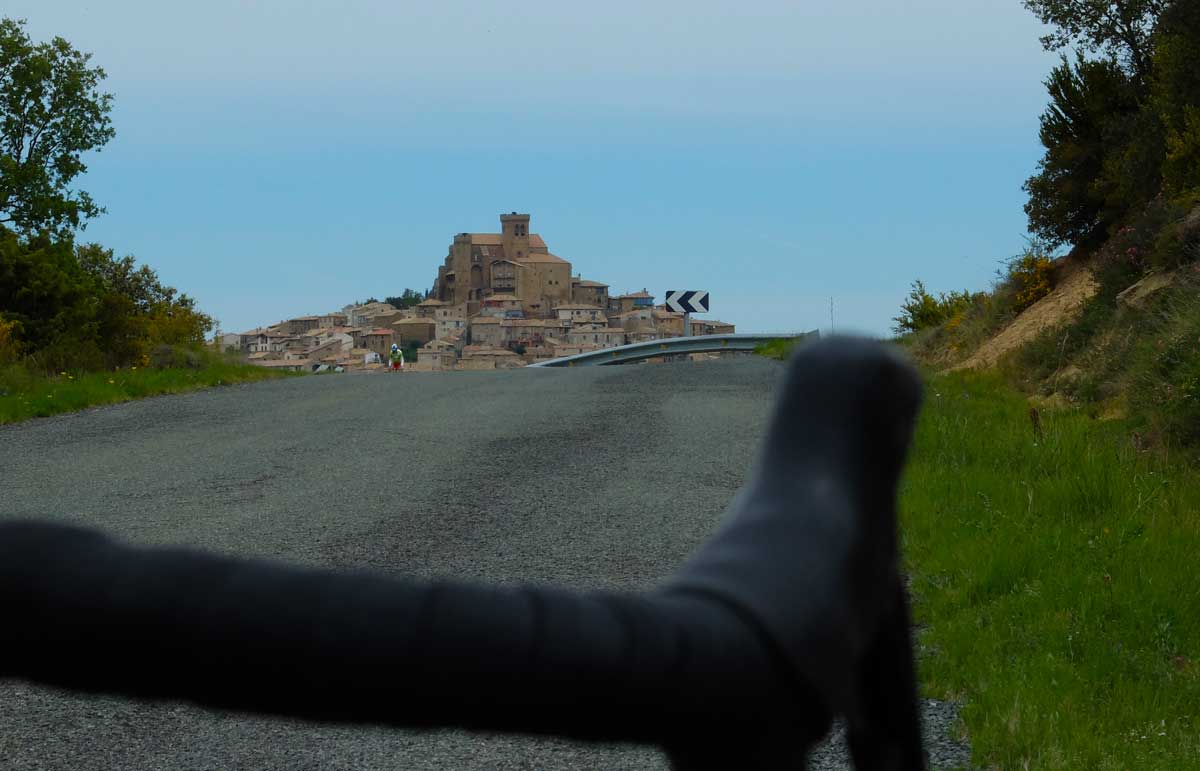
After a long ascent from Murillo El Fruto by the Mountain Pass of La Blanca - by the color of the Hermitage on its summit - Ujue emerges as a lighthouse.
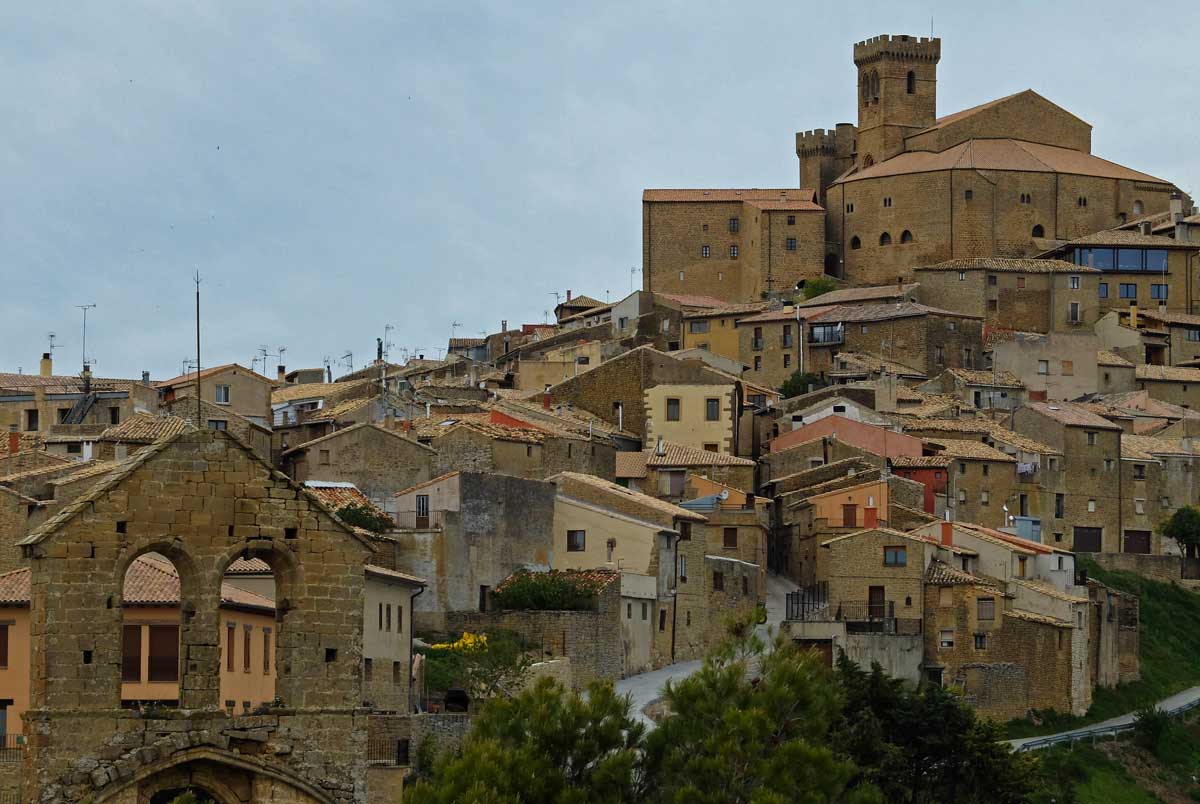

The few kilometers that we have left to finish the stage in Olite are practically downhill, so the stop in the third village "watchtower" of the day, Ujue, becomes "obligatory". The monumental complex, which is in itself the entire Villa, is finished off with the impressive Fortress - Castle / Church - of Santa Maria. A church enclosed in a castle

End of stage in the spectacular Real Palace of Olite.
Up
Stage 4: Olite - Pamplona - Distance: 82 km Unevenness: 1.250 m

We can say that the last stage of Pamplona CASTILLOS del REYNO is divided into a first part that we could describe as "intensely medieval" and a second "intensely cyclist".
In the 1st we will start crossing the medieval Tafalla, Artajona - with its dazzling Cerco de Artajona, Mendigorria and Puente La Reina with its medieval bridge with seven arches over the river Arga. Again we will have to decide how to dedicate our time in order to not lose the rhythm on the bicycle.
The second part takes on a more sporting character as we reach the Guirguillano and Etxauri mountain passes along the route, two of the classic mountain passes in the Pamplona Basin. The difficulty is not high but neither are "simple slopes".
From the top of the viewpoint of Etxauri we will see Pamplona and a great part of the journey made during these 4 days. It is now only descend and after visiting the last Castle of the route in Arazuri integrate into the Arga river walk to make a relaxed entrance to the old Iruña.
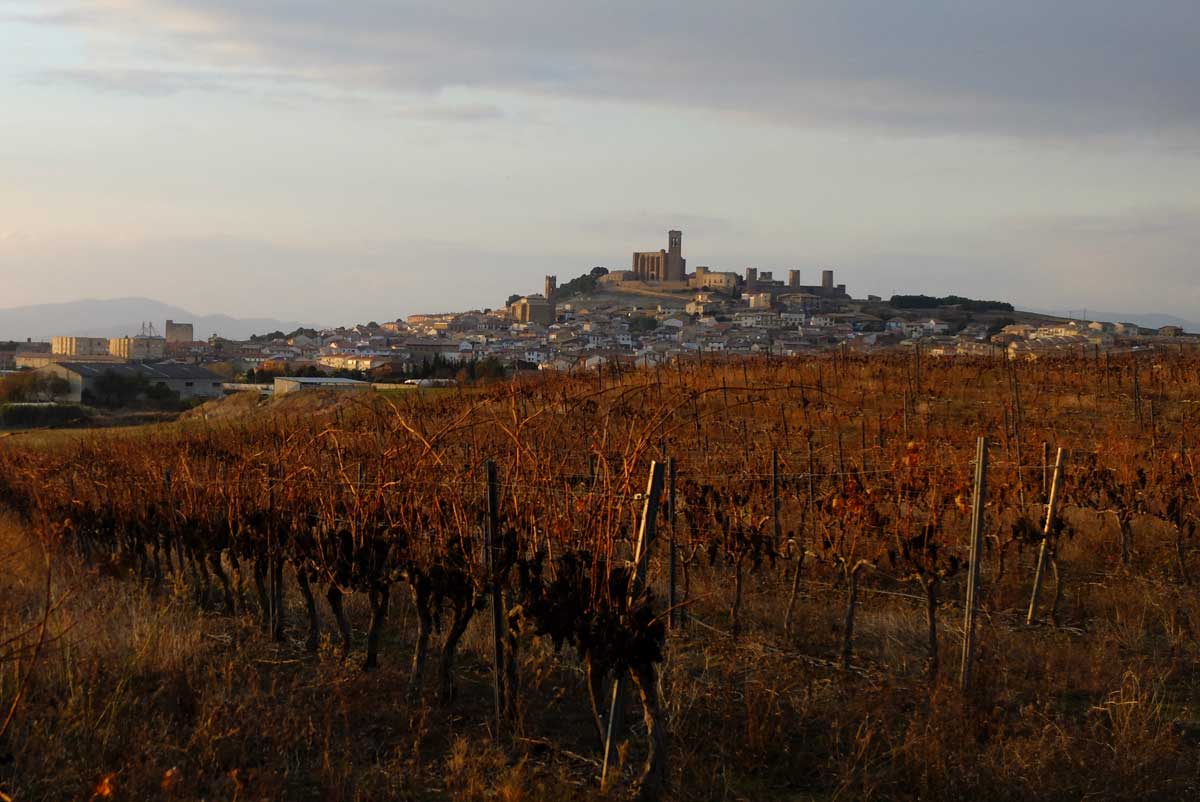
After a brief ascent from Tafalla, Artajona and its towers suddenly appear.

We arrive at the Cerco de Artajona, one of the most impressive and best preserved medieval enclaves in Navarra.

Medieval bridge over the Arga that gives its name to the medieval village of Puente La Reina.

Professional peloton crowning our first difficulty of the day, Guirguillano Mountain Pass.
Gran Premio Indurain 2017
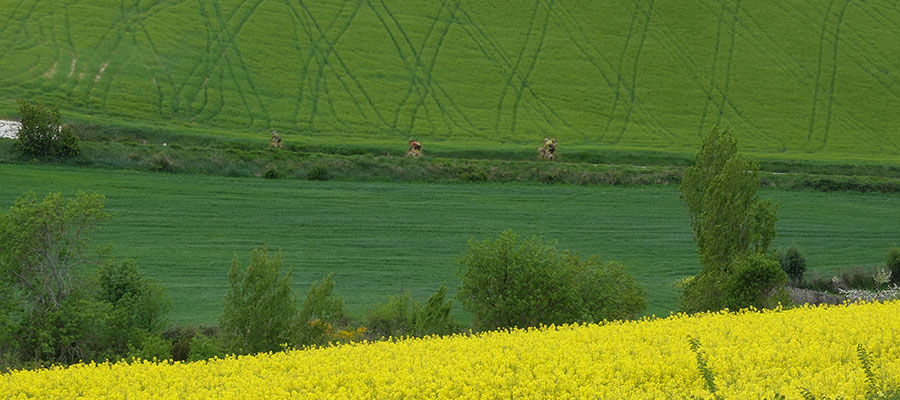
Navarra of sunflowers
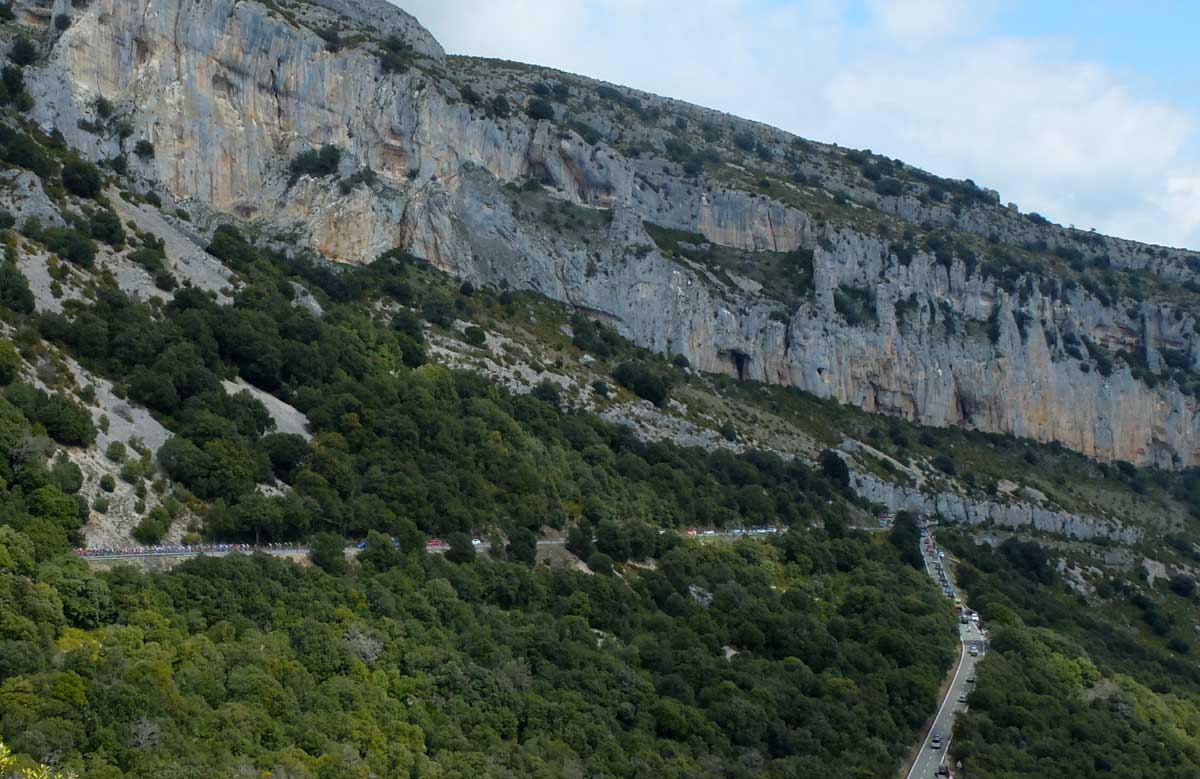
Etxauri Mountain Pass, an unconditional in any route that boasts the Pamplona Basin.
Euskal Itzulia 2017

Zoom in on the same view.
Euskal Itzulia 2017
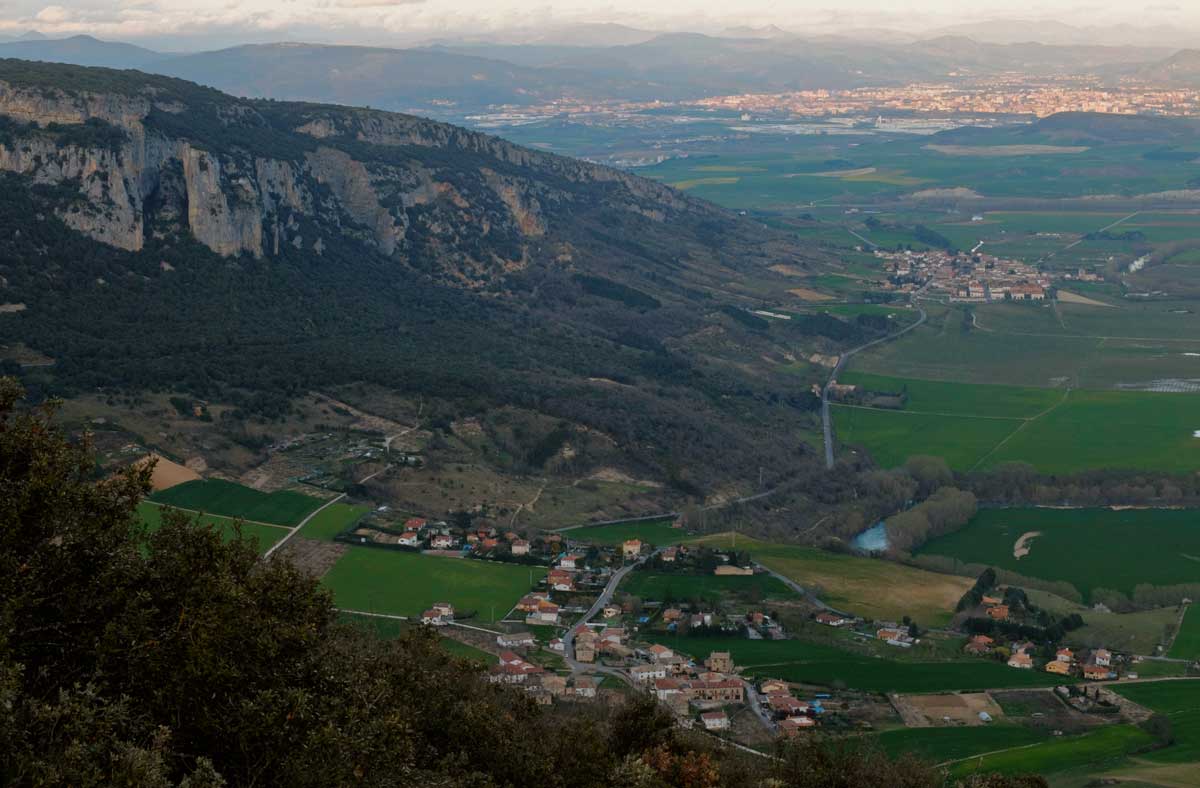
Mandatory stop at the viewpoint of the Etxauri Mountain Pass. Illuminated in the background already appears Pamplona. We are finishing Pamplona CASTILLOS del REYNO.
Up

The Program and the Hotels, day by day
- Day 1
- Arrival to Pamplona
If you arrive soon to Pamplona and want to ride a few kilometers by bicycle, we will give you a track to explore the surroundings of the city.
Pamplona gives a lot of itself, the option of extending the stay in the city by at least one day increases the quality of the trip. - Dinner in: Pamplona Catedral Hotel
- 1st night: Pamplona - Pamplona Catedral Hotel
- Arrival to Pamplona
- Day 2
- Stage 1: Pamplona - Aoiz 91 km
- Dinner in: the hotel where we are staying
- 2nd night:
- Aoiz - Hostel Itxasoenea
- Ekai - Hotel Ekai
The variation of the accommodation point in this stage is due, among other reasons, to the fact that often - depending on the dates - some of the hotels are closed.
- Day 3
- Stage 2: Aoiz - Castillo de Javier 93 km
- Dinner in: Hotel Xabier
- 3rd night: Javier - Hotel Xabier
- Day 4
- Stage 3: Castillo de Javier - Olite 103 km
- Dinner in: Parador de Olite
- 4th night: Olite - Parador de Olite -
- Day 5
- Stage 4: Olite - Pamplona 82 km
- Dinnner: Gastronomic Experience in Pamplona
If you prefer it is possible to enjoy this experience the night of the day of arrival. - 5ª night: Pamplona - Pamplona Catedral Hotel
- Day 6
- After breakfast: End of the PIRINEOS PUNTO BIKE services unless a subsequent transfer service has been hired.
The base of PIRINEOS PUNTO BIKE in Pamplona is located in an indisputable 4 star hotel located in the old part of the city.







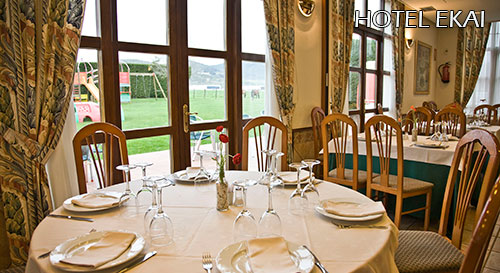





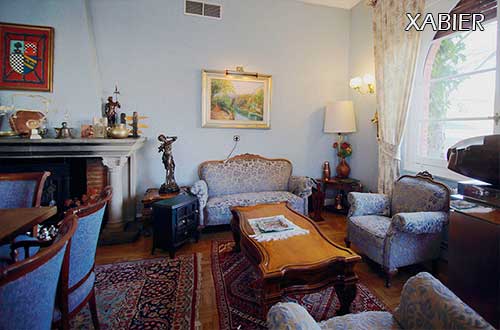

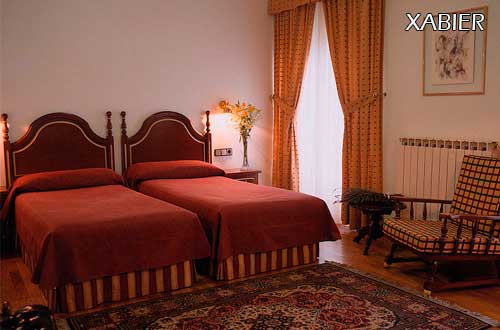

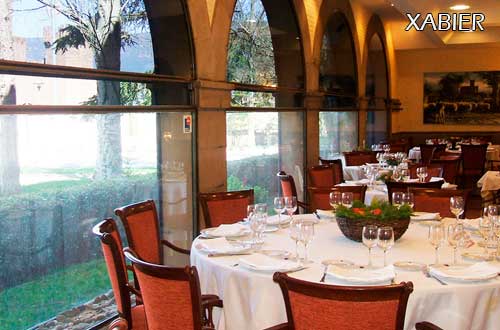




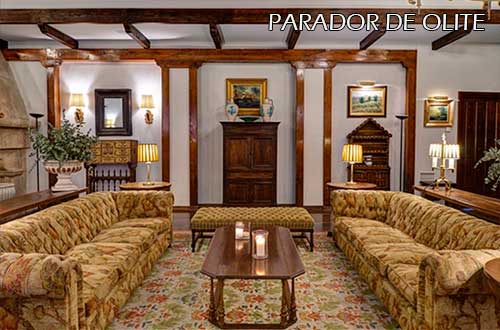

For this 4th night in Olite it is also possible to opt for our VIP accommodation inside the medieval Villa La Joyosa Guarda




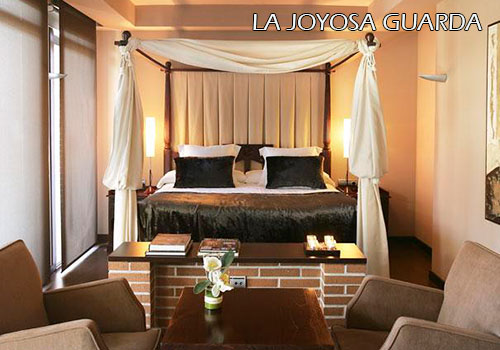

Up

- HIGHLIGHT - Gastronomic Experience in Pamplona
For the night of arrival or for the noon of last day you will have to choose between all these Gastronomic Experience in Pamplona... truly a difficult choice.
Gastronomic Experience

Vanguardism and Imagination Koldo Rodero
1 Michelin Star, 2 Repsol Suns.

Authentic cuisine with very careful product, family atmosphere with history, close and creative.
In short, cuisine characterized by the affection for the creation of new flavors that are born of the traditional products of the land Navarre and the avant-gardism and imagination of its authors. Result? A different kitchen.



Gastronomic Experience

High cuisine in the heart of Pamplona.
1 Michelin Star, 2 Repsol Suns.

To the delicacy, finesse and cult to the traditional flavor of a season cook like Pilar Idoate, one of the essential pillars of restaurant Europa, joins the young cook from Guipuzcoa Arkaitz Muguruza, bringing new technique and creative ideas in line with what is cooked in the world.

It is difficult to achieve a greater balance between the gastronomic roots Navarras, a magnificent raw material and a refined technique. And if we speak of drinks, careful letter, directed by a professional sommelier of wines and spirits.

Gastronomic Experience

Symbiosis between grilling and raw material.
2 Repsol Suns
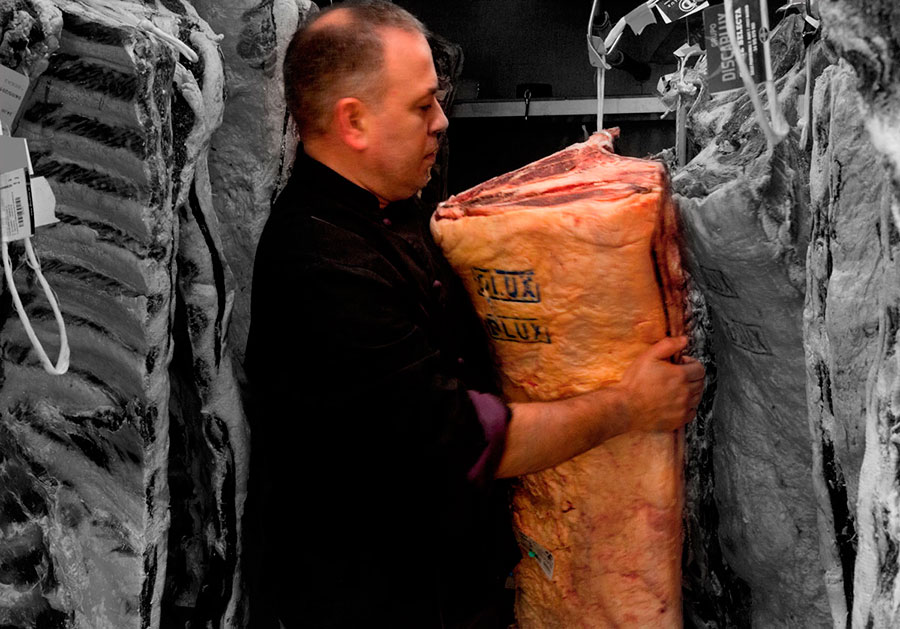
Bidea 2, a place of reference in Navarra gastronomy, in which the ember plays a predominant role.

The formula for the success of this establishment lies in the intrinsic quality of each and every one of the raw materials that are offered, plus a service and customer service at the height of a great restaurant. This sum succeeds to aupar today the Asador Bidea 2 among the 100 best in Spain.

Professor in the grilling courses for Basque Culinary Center, GREGORIO TOLOSA leads the Asador Bidea 2, where the raw material and a careful technique reach the highest levels in the Navarra gastronomy.
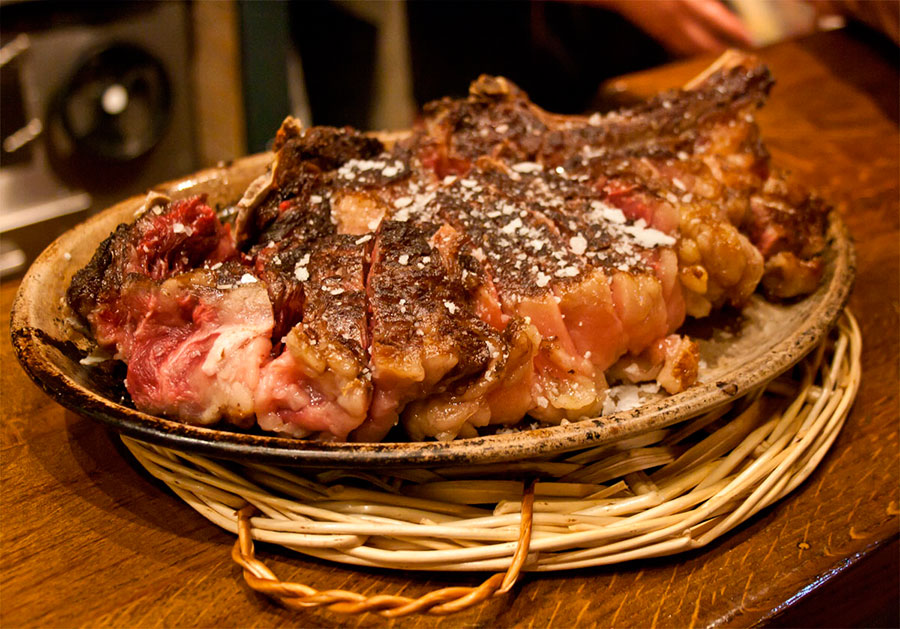
Gastronomic Experience

Enekorri, festival of flavors and sensations.
1 Repsol Sun.
Enekorri opened its doors more than thirty years ago and is one of the gastronomic references of Pamplona.

Touches of author respectful with the flavors of the raw material coming from the rich regional pantry..

Seasonal products command. There is no more chemistry than this, which is no small thing.
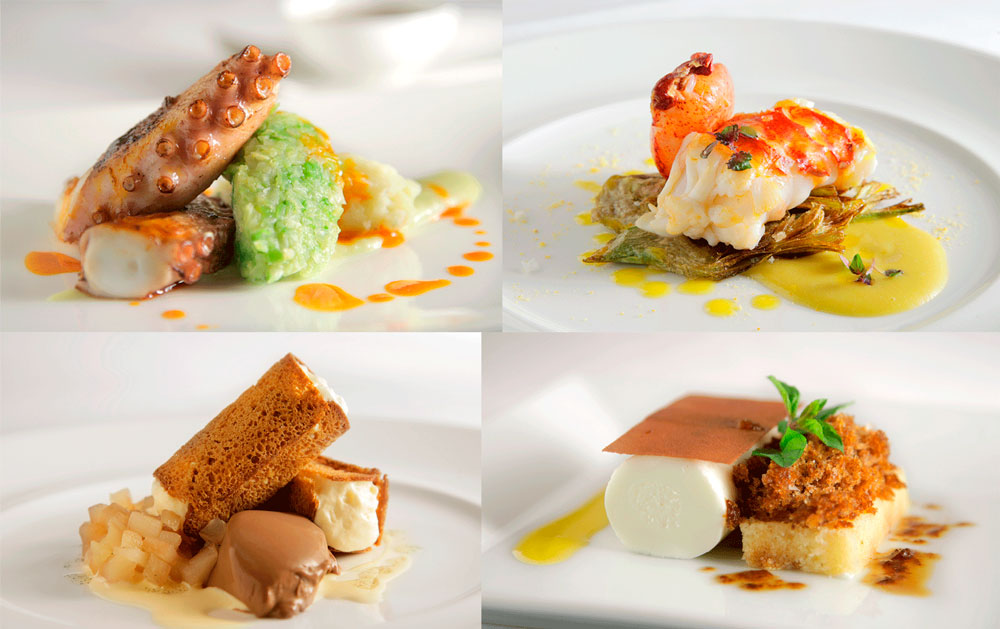
Example of constant innovation and updating. Presiding over the plate; Raw material worked with exquisite and exquisite touches in which the imagination is not lacking.
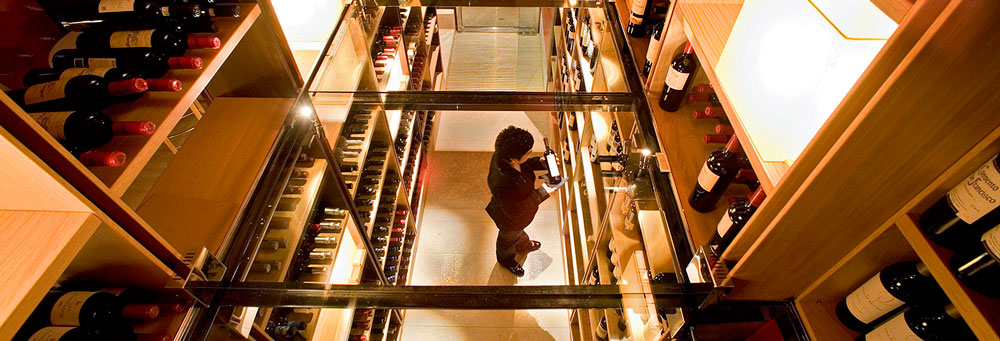
Gastronomic place of reference where we will also enjoy a very unique establishment.

Gastronomic Experience

Author´s cuisine, creative and traditional.
2 Repsol Suns
The Alhambra Restaurant is one of the representatives of the haute cuisine of Pamplona for its own merits, both for its history and good know-how..
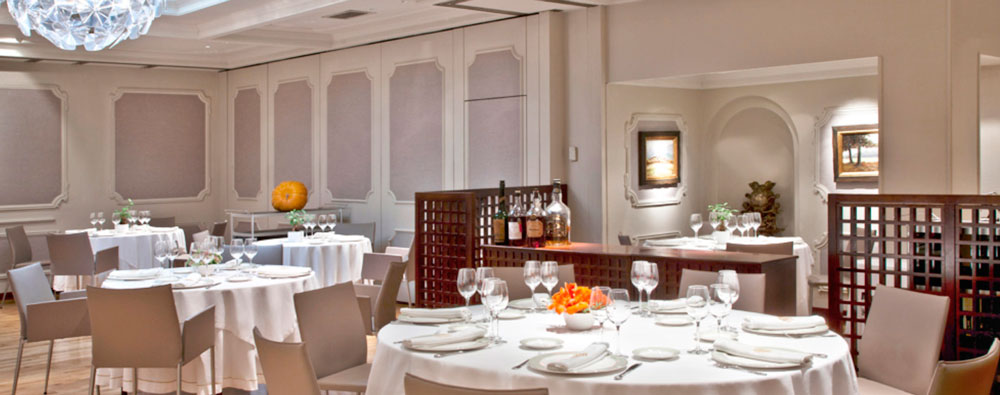
Opened in 1985, it has become a must-have when it comes to the cuisine of Navarre. A renovated classic, a professional brigade, intimate lighting and maximum privacy between the tables. Traditional elaborate cuisine.
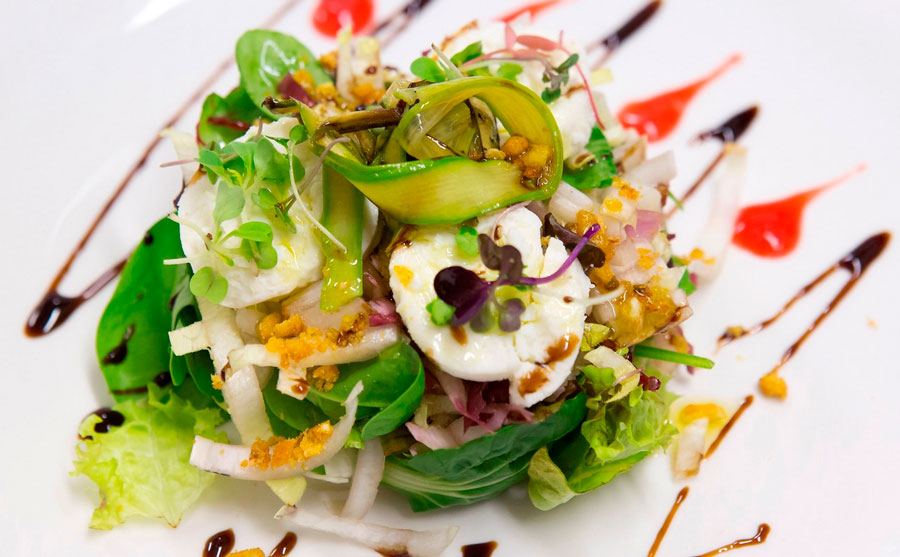

Javier Díaz, responsible for his cookers, interprets with his own technique and style the culinary tradition of the land. It is surprising the elaboration and combination of ingredients, secret of the good taste that keeps the Alhambra Restaurant as one of the best in the Navarrese capital. Iñaki Idoate and his sister Esther, of deep-rooted host family, supported by a good team, maintains a constant evolution.

Suggestive letter that changes every season, demand on quality products, and an elaboration in which no flavors or qualities are lost. Alhambra.
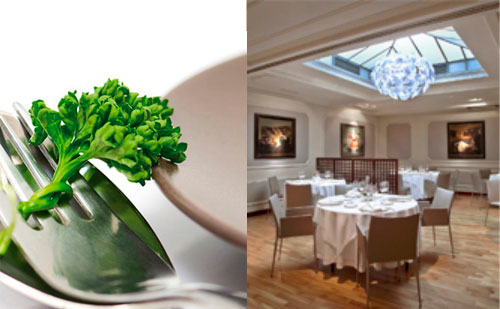
Up

TARIFFS
Minimum group 2 people
882 € Price per person in double room
749 € Price per person for groups of 6 or more people in double room TWIN
Rates for the whole year, subject to availability.
The prices may vary when the dates coincide with the Easter holidays or with the Patron Festivities of any of the places of accommodation.
INCLUDED
- 5 nights accommodation in half board
1 of the dinners will be replaced by the Gastronomic Experience Transport of luggage between hotels
1 bag or package of a maximum of 20 kg per person
If not needed, the cost of this service will be deducted from the proposal- Explanatory printed map-sketch of the different route options for each stage
One per stage - Tracks of the route in GPX format for mobile phones or GPS devices and printed map with each day routes options
- Link to services that may be necessary along the route
- Presentation of the route and delivery of information in hand the day of the arrival of the group to the hotel or the morning of the next day
- Telephone assistance for incidents or consultations during the days of the contracted activity
- 1 Gastronomic Experience in Pamplona. To choose between the night of arrival in the city or that of the last day.
Select Restaurant in this list and indicate it in the application.
- Rodero
- Europa
- Enekorri
- Alhambra
- Bidea 2
Up
NOT INCLUDED
- Beers or other consumptions outside the proposed menus in the dinners or during the stay in hotels
- Meals in restaurants at the time of the noon, unless it has been agreed previously to replace dinner with meals
- Any kind of sports material, helmets, shoes, etc
- Mechanical Assistance during the activity
If possible, we will try to help you in case of a breakdown, but in many situations this help can be very limited due to lack of specific spare parts or other circumstances. The cost of the service if it can be done is € 18 per hour + € 0.40 per kilometer. - Anything not expressly indicated in the offer
OPTIONS
- Airport/station pick up
We put you in contact with the transfer companies that provide these services. We do not include its cost in our proposal. - Bicycle rental
We put you in touch with a rental service in the nearest place to the route start point - Hire Asistance / Accident Insurance
and / or Trip Cancellation Insurance - Single room supplement: + 284 €
When the group is made up of an odd number of people, will be equally necessary an odd number of requests to access this supplement
Up




